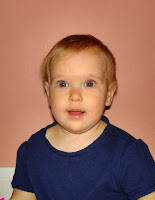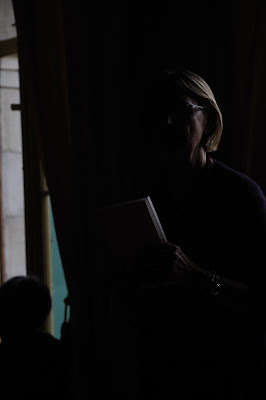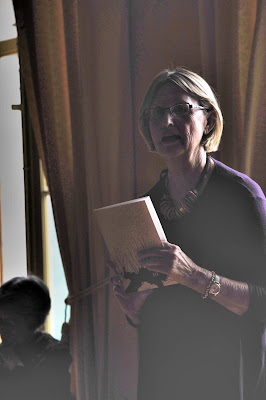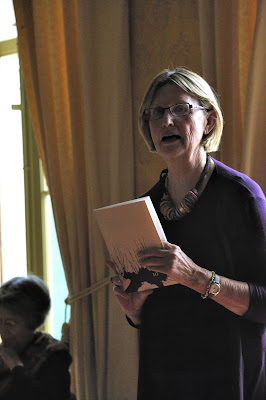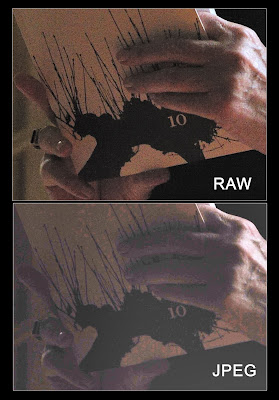No, this isn’t a joke. The last shopping weekend before Christmas is on us and maybe you're panicking. Photography is so technical these days that trying to find Christmas presents for a photographer is no laughing matter.
Here are a few straightforward ideas, suitable for photographers of all levels ...
A polarizing filter
These things don’t come cheap, but a they’re a great accessory. A polarizing filter screws on to the front of a lens and cuts reflections from water, glass and other shiny surfaces. It also makes the sky a deeper blue, can cut haze in landscapes and generally enriches colours.
The points to watch out for when buying one are:
- Make sure your photographer can use one. Most compact cameras can’t take them because polarising filters screw in to a shallow thread at the very front of the lens, and compacts don’t have this. On the other hand, almost all interchangeable lenses – the sort used in DSLRs – do.
- Make sure you get the right size. Look inside the lens cap and you will probably see a marking giving the diameter of the lens (in millimetres). If not, measure it. Remember, different lenses have different diameters so, even if your photographer already has a polarizing filter, he/she may appreciate another for a different lens.
- If your photographer owns a digital camera make sure you get a circular polarizing filter. No, this does no refer to the shape – they are all circular – but the type. (The other type is ‘linear’). The one you want should be marked ‘Circular Polariser’, or bear the abbreviation Cir, PL Cir, or CPL. If in doubt, ask an assistant.

This photo of the famous Jet d'Eau in Geneva, Switzerland, was taken
using a polarizing filter to make the water stand out against the sky.
An extra memory card
Photographers, particularly the serious ones, can never have too much memory. And with Christmas celebrations offering photo opportunities galore, your photographer will appreciate some extra storage.
The only question is, what sort of card? There are a number of types on the market, SD (Secure Digital), SDHC (Secure Digital High Capacity), MMC (MultiMedia Card), XD (eXtreme Digital), CF (CompactFlash) and Micro SD. So check before you buy.
A second battery.
A camera is totally dependent on its battery. And, as a photographer, nothing is more frustrating than have it go flat just as a brilliant photo opportunity unfolds in front of the lens. By the time the battery has charged again the opportunity has long gone.
With a spare battery your photographer has no problems. Slot it into place and carry on shooting whilst the first battery is re-charging.
A tripod
Any photographer can use a tripod, just so long as his/her camera has a socket to take it. Look underneath the camera to find out. There should be a threaded hole on the base-plate.
You can get tripods in all sizes, from little tiny ones that fit in your pocket to hulking great things that weigh a ton. Choose appropriately. A compact camera looks a bit daft on a tripod built like the Eiffel Tower.
The great thing about tripods is that they let you take photographs that would otherwise be impossible – long exposures, self portraits, close-ups, slow shutter speed images. A professional photographer I knew used to say the first thing you should do with a new camera is to weld it to a tripod – they’re that useful.
Camera cleaning equipment.
Dust is the photographer’s Number One Enemy. It gets on the lens and degrades the quality of the image ...

This is what too much dust on the surface of a lens does.
... and it gets on to the sensor inside the camera and causes unsightly spots (see
here).
For dealing with dust on the lens you can get your photographer a microfibre lens-cleaning cloth, a soft brush or a blower. Just don’t bother with those diddly little blower-and-brush-combined jobbies. They’re not worth it. Buy a big one that looks like a hand-grenade with a point sticking out of the top. They’re the business.
The big blower can also be used for puffing dust off sensors. In addition, for sensor cleaning, you can get special static-charged brush sets (the brush is whirled around to charge it and then lightly brushed across the sensor to pick up the dust). Finally, for really stubborn dust, a swab set is useful. It comes with a number of specially shaped swabs and bottle of cleaning fluid. make sure you get the right size swab for your photographer’s camera (ask the assistant).
A camera bag
As with memory cards, a photographer can never have too many bags. A backpack for treks in the hills, a shoulder bag for town work, an individual camera case – all photographers need bags, not only to carry the camera, but also all the spare memory cards, batteries and filters they just got for Christmas.
Last but not least ...
... one of my books will make a great gift for the photographer in your life.
And if you’re a photographer, and this has given you some ideas, you may want to leave hints around the house, or direct your loved ones to this page.
Happy Christmas.






















